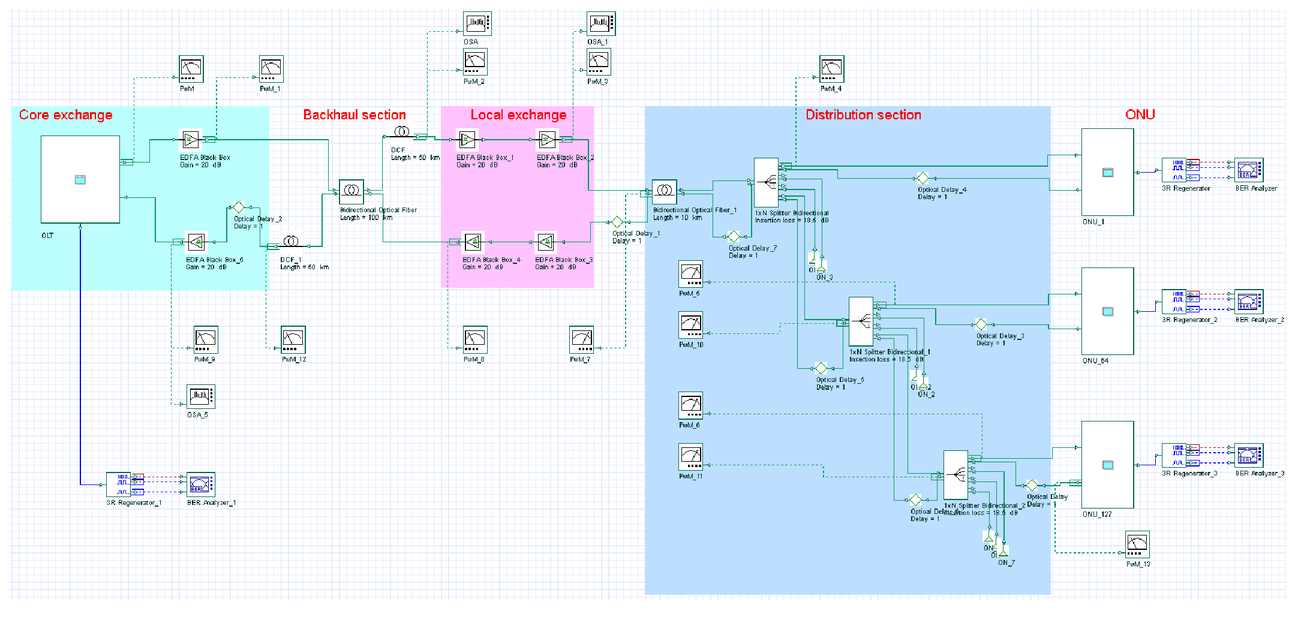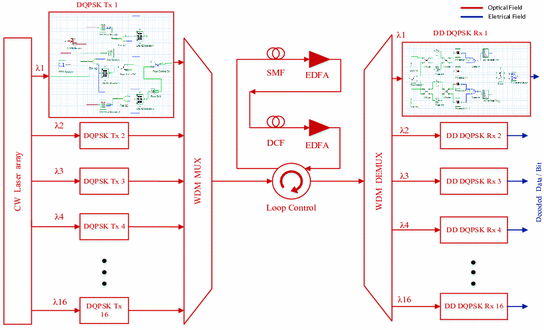

The answer is to develop WDM-PON architectures in which the same hardware is used to generate any wavelength required by the network, the so-called colorless sources ,, ,, ,, ,, ,, ,, ,, ,, ,, ,. Wavelength-agnostic transmitters are paramount for WDM-PON because the use of fixed wavelength transmitters, creates a formidable burden in terms of operational costs, given that a high number of different laser devices (equaling the number of wavelengths in use), must be kept in inventory by the network operator. While the gigabit-capable passive optical network (G-PON) and 10 gigabit-capable passive optical network (XG-PON) are likely to be enough to support the needs of residential and business clients in the next few years, wavelength division multiplexing passive optical network (WDM-PON) architectures have attracted a great deal of attention for more demanding applications, such as optical fronthaul in mobile 5G systems . Specifically, the double erasure procedure allows the use of relatively high levels of E R D, thereby providing improved bit error rate (BER) at the ONT, while assuring high-quality generation of the self-seeding carrier and loopback operation. The results indicated that our proposition effectively addresses a fundamental trade-off for WDM-PONs based on the wavelength reuse and/or self-seeding techniques.


Also, bidirectional transmission of 1.25 Gb/s over links reach up to 45 km is achieved by the double-RSOA cavity, surpassing in 25 km our original combined topology.

Using our original single-cavity self-seeding WDM-PON architecture as a benchmark, downstream extinction ratio ( E R D) margins of 6.5 dB and 9.0 dB are obtained, for generating self-seeded downstream signals and upstream remodulation, respectively. To carry out the study, our experimental results for our earlier combined topology layout operating at a symmetric transmission were used to validate the simulation framework for the proposed double-RSOA erasure configuration. Improved performance is achieved by enhanced erasure efficiency using a self-seeded double-RSOA cavity at the optical line terminal (OLT) and cascaded RSOAs at the optical network terminal (ONT). km - 0.5 is around - 22 dBm and for strong turbulence is around - 20 dBm.In this work, we investigated a novel wavelength division multiplexing passive optical network (WDM-PON) configuration, based on cascaded reflective semiconductor optical amplifiers (RSOA) data erasure for combined self-seeding and wavelength reuse. It has been shown that the receiver sensitivity for a polarization mode dispersion of 0.06 ps. A techno-economic performance analysis of the architecture for downstream is performed by considering both the distribution and protection paths. km - 0.5 and the refractive index structure parameter of the Gamma-Gamma channel model from 5 × 10 - 16 to 5 × 10 - 12 m - 2 / 3 is evaluated. The effect of varying polarization mode dispersion from 0.02 to 0.06 ps.
Rsoa in optisystem free#
However, to the best of our knowledge, a self-restorable passive optical network architecture employing free space optics based protection path has not been proposed so-far. Self-restorable passive optical networks having fiber based feeder and distribution paths are widely researched in various studies in the past. The proposed architecture is a step forward towards shifting the next generation wireless network traffic over existing passive optical network to achieve the optimum bandwidth, capacity, quality of service and cost efficiency for mobile subscribers. A cost efficient and reliable single mode fiber and free space optics based hybrid 32 × 5 Gbps ultra dense wavelength division multiplexed-passive optical network architecture employing optical comb and polarization multiplexing is proposed.


 0 kommentar(er)
0 kommentar(er)
